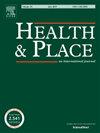When the basic seems like a luxury: Menstrual friendly public toilets in six cities
IF 3.8
2区 医学
Q1 PUBLIC, ENVIRONMENTAL & OCCUPATIONAL HEALTH
引用次数: 0
Abstract
Background
Public toilets are an important resource for securing gender equitable access to public space, but they are neglected across global contexts. This qualitative study explored the status, opportunities and challenges to creating menstrual friendly public toilets (MFPTs) in six cities: Barcelona, Kampala, Manila, New York City, Osaka, and Rio de Janeiro.
Methods
We conducted key informant interviews (KIIs) representing public, private, and non-governmental organizations familiar with public toilets or menstrual health and equity advocacy in their respective cities. Interviews covered various topics related to the quality and priority of public toilets, status of menstruation-related provisions, and opportunities and challenges for creating menstrual friendly public toilets. We conducted thematic analysis of interview transcripts to identify overarching emerging themes and their city-specific implications.
Results
Three themes emerged: 1) “Menstrual friendly public toilet” is a compelling concept 2) Bureaucratic complexity and low priority for public toilets present barriers to MFPTs; and 3) Connecting menstrual stigma and public toilet inadequacy are advocacy opportunities.
Discussion
Despite variations in resourcing, infrastructure, and priorities for public sanitation across cities, the idea of an MFPT prompted a common reflection on the inequities inherent in deficiencies in public toilet infrastructure; challenges posed by the combination of complicated public toilet decision-making and under-resourcing; and menstrual stigma. Mobilizing action around the shared need to improve public toilets and defining concrete context-specific features of an MFPT are common strategic priorities.
Conclusion
Findings highlight the value of the concept of an MFPT and its potential to contribute to improving gender equitable access to urban public spaces through investments in sanitation.
求助全文
约1分钟内获得全文
求助全文
来源期刊

Health & Place
PUBLIC, ENVIRONMENTAL & OCCUPATIONAL HEALTH-
CiteScore
7.70
自引率
6.20%
发文量
176
审稿时长
29 days
期刊介绍:
he journal is an interdisciplinary journal dedicated to the study of all aspects of health and health care in which place or location matters.
 求助内容:
求助内容: 应助结果提醒方式:
应助结果提醒方式:


